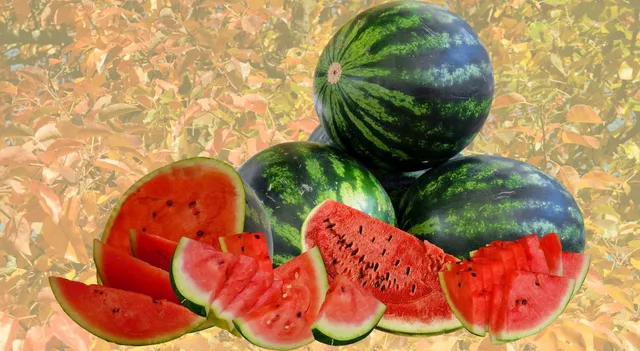- By Ridam Sharma
- Tue, 03 Jun 2025 12:10 PM (IST)
- Source:JND
Largest Watermelon-Producing Countries: Watermelon is known for its refreshing and hydrating properties. The large green fruit is consumed globally in numerous varieties. Some countries have dominated the watermelon market due to numerous reasons, like their geopolitical location, soil type, temperature and cultivation advancements. Now, let’s take a look at the list of the largest watermelon-producing countries, along with India’s rank on the list and a lot more, according to the World Population Review report.
List Of The Top 10 Largest Watermelon-Producing Countries In The World:
| Rank | Country | Production (Million Tons) |
|---|---|---|
| 1 | China | 60.4 |
| 2 | Turkey | 3.4 |
| 3 | India | 3.3 |
| 4 | Algeria | 2.0 |
| 5 | Brazil | 1.9 |
| 6 | Russia | 1.6 |
| 7 | Pakistan | 1.6 |
| 8 | United States | 1.5 |
| 9 | Senegal | 1.5 |
| 10 | Uzbekistan | 1.4 |
Which Is The Largest Watermelon-Producing Country In The World?
China
China is the largest watermelon-producing country in the world, with almost 60.4 million metric tons of production each year. China is responsible for 60 per cent of the global watermelon supply. This huge production is backed by large cultivation land covering more than 1.4 million hectares. Watermelon is a common fruit in China and is widely consumed, all thanks to its high water content and sweet taste.
Turkey
Turkey is the second-largest watermelon-producing country in the world, with a total production of over 3.4 million metric tons. All credit goes to the country’s favourable climatic conditions and high-density agricultural methods. Turkey is an important exporter and provider in the Mediterranean market.
Read Also: Most Expensive Mangoes In India: This Variety Costs Up To Rs 3 Lakh Per Kg
India
Turkey is closely followed by India, with a massive 3.3 million metric tons of watermelon production. Watermelon is a favourite summer fruit among Indians as it is widely cultivated in warm-climate states. India's watermelon cultivation area spans more than 126,000 hectares, with increasing production boosted by local demand and good weather conditions.
Algeria
Algeria is the fourth-largest producer of watermelon in the world, with over 2 million metric tons produced yearly. The flourishing watermelon cultivation is due to its warm, arid climate and high-end irrigation techniques. The watermelon production is responsible for domestic use and export, which makes an invaluable contribution to Algeria's agricultural economy.
Brazil
Brazil produces 1.9 million metric tons of watermelon each year. Watermelon is grown extensively throughout Brazil, particularly in the northeast, where the climate is tropical and favourable for year-round watermelon production. Its market in Brazil serves both the domestic and export markets with higher yields.
Russia And Pakistan
Russia and Pakistan both cultivate around 1.6 million metric tons of watermelon each year. Russia's watermelon production is focused in its southern parts with favourable warm weather in the summer. Whereas, Pakistan's watermelon production helps both domestic and foreign markets, with the watermelon crop being primarily grown in Punjab and Sindh provinces.
USA
The United States produces 1.5 million metric tons of watermelon each year. The US watermelon business is primarily in cities like Florida, Texas, and California. Watermelon is a seasonal fruit, and the nation invests in research to increase crop yields and disease resistance, holding its ranking as a top producer.
Senegal
Senegal also produces 1.5 million metric tons of watermelon every year. Watermelon cultivation is a significant agricultural crop that maintains rural livelihoods and local markets, thanks to a favourable climate and irrigation facilities that allow continuous production growth.
Uzbekistan
Uzbekistan concludes the list of the top 10 largest watermelon-producing countries, with over 1.4 million metric tons. Fruit is part of the country's staple diet, facilitated by the nation’s dry climate and irrigation facilities. It is used for both local consumption and export to the Central Asian region.

